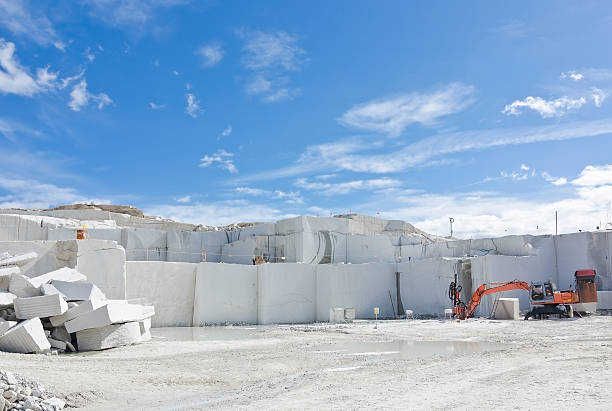Revealing the Mysteries of Granite Quarrying: Where Strength and Beauty Meet
The globe of granite quarrying is a world where the raw strength of nature merges with human virtuosity to develop structures that stand the examination of time with an air of beauty. From the midsts of quarries to the thorough sprucing up in workshops, the process of transforming granite right into architectural marvels is a complex dance of custom and technology. As we peer into the midsts of this old craft, we start to uncover the covert intricacies that form the extremely essence of our developed environment.
The Beginnings of Granite Quarrying
In the annals of building history, the origins of granite quarrying are shrouded in a tapestry of ancient workmanship and geological marvels. Going back to ancient Egypt and Mesopotamia, the removal of granite from quarries noted the start of a journey that would eventually bring about the production of several of the globe's most iconic structures.
Granite quarrying's origins can be traced to the competent craftsmens that recognized the rock's toughness and aesthetic appeal. Via a mix of primitive tools and sheer resolution, these early quarry employees unearthed granite blocks that would become the building blocks of civilizations.
As people evolved, so did the techniques of quarrying granite. The Romans, renowned for their design expertise, created sophisticated techniques for extracting granite to construct monoliths, holy places, and roadways that stood the examination of time.
The legacy of these old quarrying methods remains to shape modern-day style, with granite staying a symbol of stamina and sophistication in building and construction projects around the world. (granite quarries in south africa)
Devices of the Quarrying Trade
The development of granite quarrying techniques from ancient people to modern times highlights the vital function played by the tools of the quarrying trade in forming the market's practices. In old times, quarrying tools were primary, usually including knives, hammers, and wedges made from products like bronze or iron. These tools called for significant manpower and time to extract granite obstructs from quarries.

In addition, the introduction of pneumatic tools and high-powered equipment has considerably decreased the physical labor needed in quarrying procedures, enhancing employee safety and productivity. As the quarrying market continues to innovate, the tools of the profession continue to be at the Look At This leading edge of driving progression and shaping the future of granite removal.
Drawing Out Blocks of Granite
Utilizing accuracy machinery and progressed techniques, the removal of granite obstructs from quarries has actually come to be an advanced process in the modern quarrying sector. The first step entails recognizing the place and dimension of the granite down payment to figure out one of the most effective extraction method. As soon as an appropriate website is chosen, the removal procedure starts with the drilling of holes for the placement of explosives. Regulated blowing up methods are then used to break apart the granite right into manageable areas.

Polishing and Ending Up Methods
To achieve a perfect surface area on granite blocks, competent craftsmens use a collection of precise sprucing up and completing methods. After the first removal and forming processes, the granite blocks undergo a comprehensive polishing stage to enhance their natural elegance and toughness.
Along with polishing, completing techniques are used to more refine the granite's appearance. These methods may include flaming, honing, or brushing, each offering special appearances and coatings to suit various visual preferences. Flaming, as published here an example, involves revealing the granite surface to heats to create a rough, textured surface, suitable for exterior applications where slip-resistance is important. Developing, on the other hand, gives a matte finish that is smooth to the touch, ideal for indoor kitchen counters and flooring. By very carefully choosing and applying these polishing check these guys out and completing methods, craftsmens can change raw granite obstructs right into charming pieces that display both strength and beauty.

Ecological Impact and Sustainability
With the growing focus on ecological consciousness in the market, granite quarrying methods are progressively scrutinized for their influence on natural sources and long-term sustainability. Furthermore, the transportation of granite from quarries to processing facilities creates carbon exhausts, better contributing to ecological destruction.
To reduce these influences and ensure sustainability in granite quarrying, industry stakeholders are embracing various measures. Executing sophisticated innovations to lower power intake and water usage, reclaiming quarried land for ecological repair, and advertising liable sourcing practices are some techniques being used. Accreditations such as the Woodland Stewardship Council (FSC) and the Management in Energy and Environmental Design (LEED) help consumers determine environmentally pleasant granite products.
Verdict
To conclude, granite quarrying is a procedure that needs specialized devices and strategies to remove blocks of granite and polish them to a high degree of coating. While the environmental effect of quarrying can be substantial, efforts are being made to enhance sustainability techniques in the market. On the whole, granite quarrying is a fragile equilibrium between using the toughness and beauty of this all-natural stone while reducing its effect on the environment.